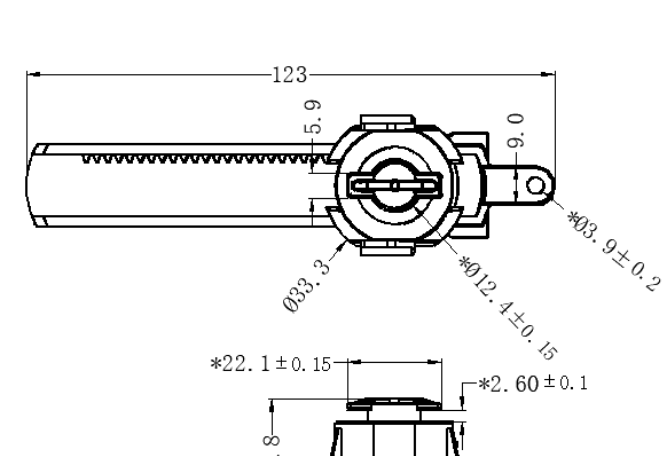A rotational damper and a linear damper share a common feature in that they both use hydraulic pressure and generate shock absorbing capacity by oil flowing in a narrow channel. However, the difference lies in the method of obtaining shock absorbing capacity: a rotational damper achieves this by rotating a shaft, while a linear damper achieves it through linear motion.
A rotational damper is a component that slowly closes a toilet lid, for example, by generating torque through the viscous resistance of oil or hydraulic pressure produced by rotating the internal mechanism. There are two types of rotary dampers with different structures. One is a continuous rotation damper that obtains shear resistance by stirring a viscous body while maintaining a certain space, and the other is a partial rotation angle damper that obtains high hydraulic pressure by intentionally pouring a viscous body into a narrow area. On the other hand, a linear damper is a mechanical component that slowly closes a sliding door, for instance, using a compressive force in a linear direction. Rotational dampers rotate in a circumferential direction, while linear dampers can only be moved in a linear direction, so it is necessary to select a product suitable for the damper’s operational image and mounting space. Depending on the mounting method, the rotary damper can be changed from rotational to linear motion.
This article will explain the difference in mechanism between a rotational damper and a linear damper and provide suitable application examples for each type of damper.

Rotational dampers are categorized into continuous rotation dampers, which utilize viscous resistance, and partial rotation angle dampers, which employ compressive force. Continuous rotation dampers generate torque by agitating oil, while partial rotation angle dampers are designed to produce torque by directing oil through a narrow channel. In both cases, rotary dampers typically have fewer components compared to linear dampers.
Conversely, linear dampers, which utilize compressive force, require additional components that rotational dampers do not possess, such as springs, resulting in a higher number of parts than rotational dampers. A spring serves the purpose of restoring a pushed shaft to its original position and also acts as a resistance element. While linear dampers can absorb relatively larger forces, they require more stroke to push oil, which tends to increase their overall length.
Rotational dampers are well-suited for products that open and close with a center of rotation and require high damping force during closure, such as toilets, pianos, and trash can lids equipped with hinges. Due to their simple attachment to the rotational axis, they can effectively slow down the movement with a straightforward mechanism. The product is integrated into the center of rotation, maintaining a clean and unobtrusive mounting area without compromising the external design. Rotational dampers are also ideal for applications where linear dampers are impractical due to axial dimension restrictions.
In contrast, installing a linear damper can be challenging as it tends to have a longer overall length, making it difficult to attach to the rotational axis. Therefore, it must be affixed at a different position, similar to a stay. This necessitates careful consideration of the mounting position and the addition of mounting parts. Furthermore, depending on the installation method, the appearance and design may be affected. However, if the rotational axis is constrained and there is no space for a rotational damper, a linear damper may be more suitable.
Linear dampers are well-suited for mounting on products with linear motion, such as sliding doors, desk drawers, and automobile and motorcycle suspensions. They are utilized for products that are not connected to the center of rotation of the lid and are primarily integrated within a three-point link, making them visible on the product exterior without compromising design or safety. Due to their ability to exert greater shock absorbing capacity than rotational dampers, they are employed in locations where substantial forces are generated, such as sliding doors. Additionally, linear dampers are suitable for applications where the outer diameter of a rotational damper would result in a poor appearance of the mounted product, or where the rod of a linear damper does not obstruct the operation.
Copyright:@2020-2021
Comments Please sign in or sign up to post.
0
0 of 500 characters used